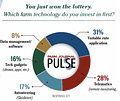Welcome back to Upstream Ag Insights!
Index for the week:
Bundling and Unbundling in Ag Retail
BASF 2020 Annual Report Analysis
The Opportunity of the Digitally Enabled Ag Retailer
The AgTech Adoption Dilemma
Chinese Price Index for Active Ingredients
Pinduoduo in Agriculture
Is there a Future for the Crop Protection Industry?
Ag Retail Consolidation
The Digital …

